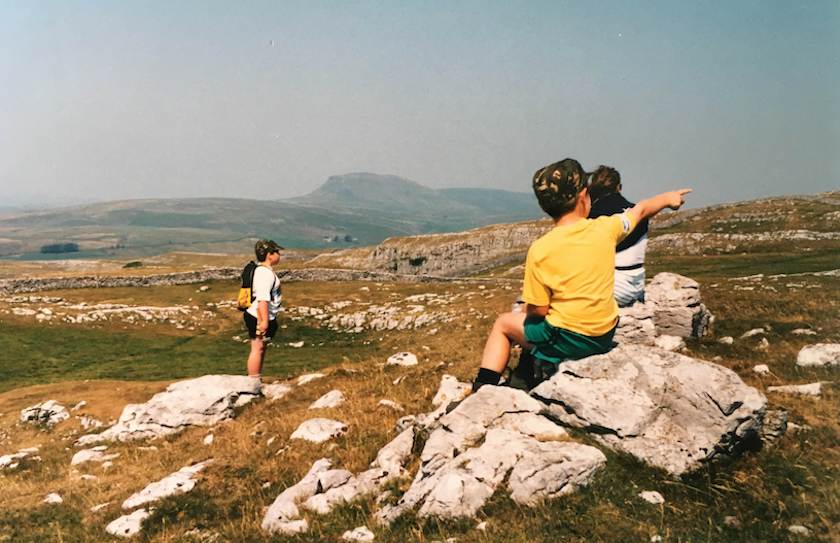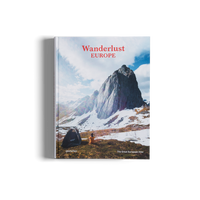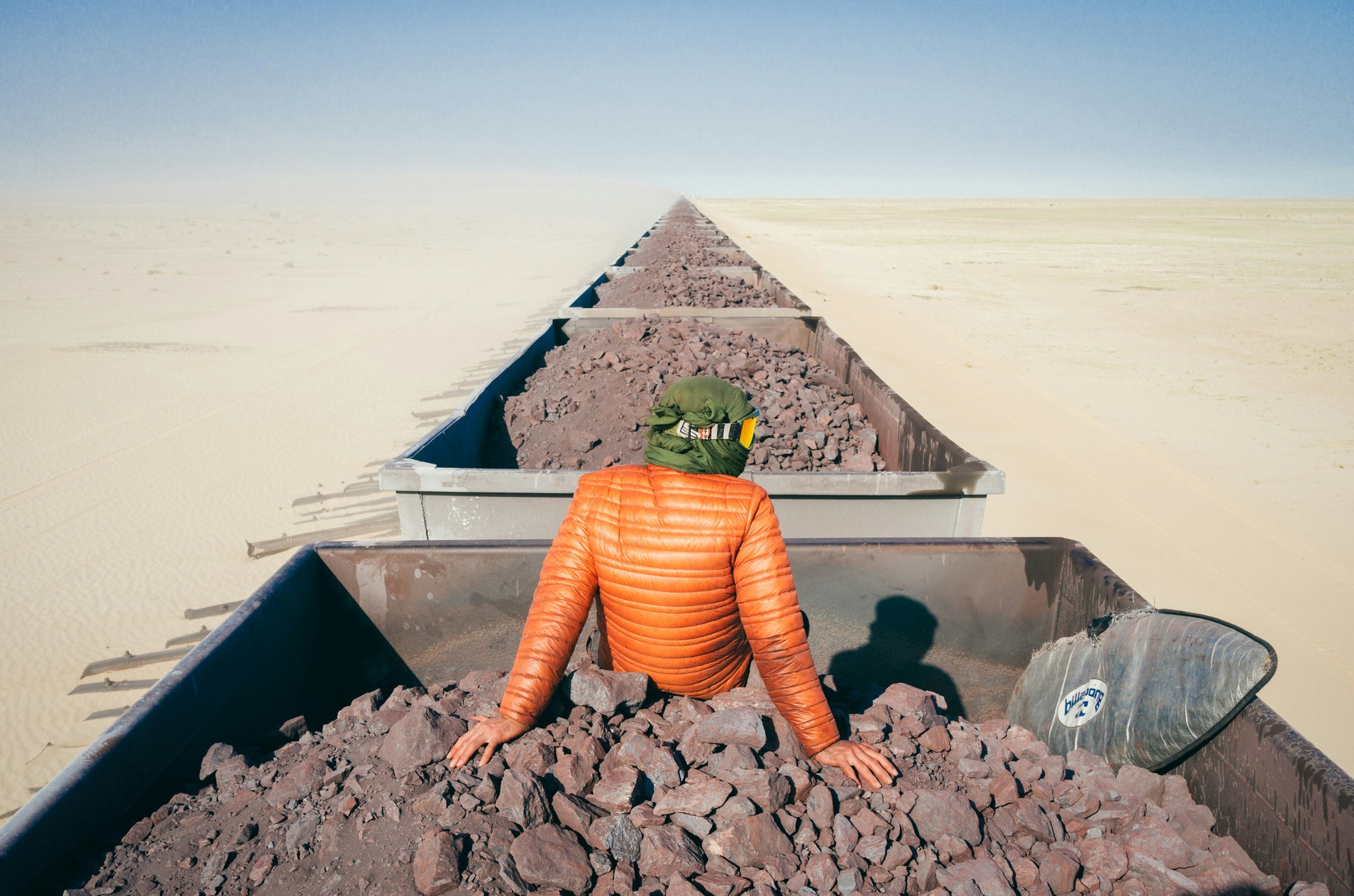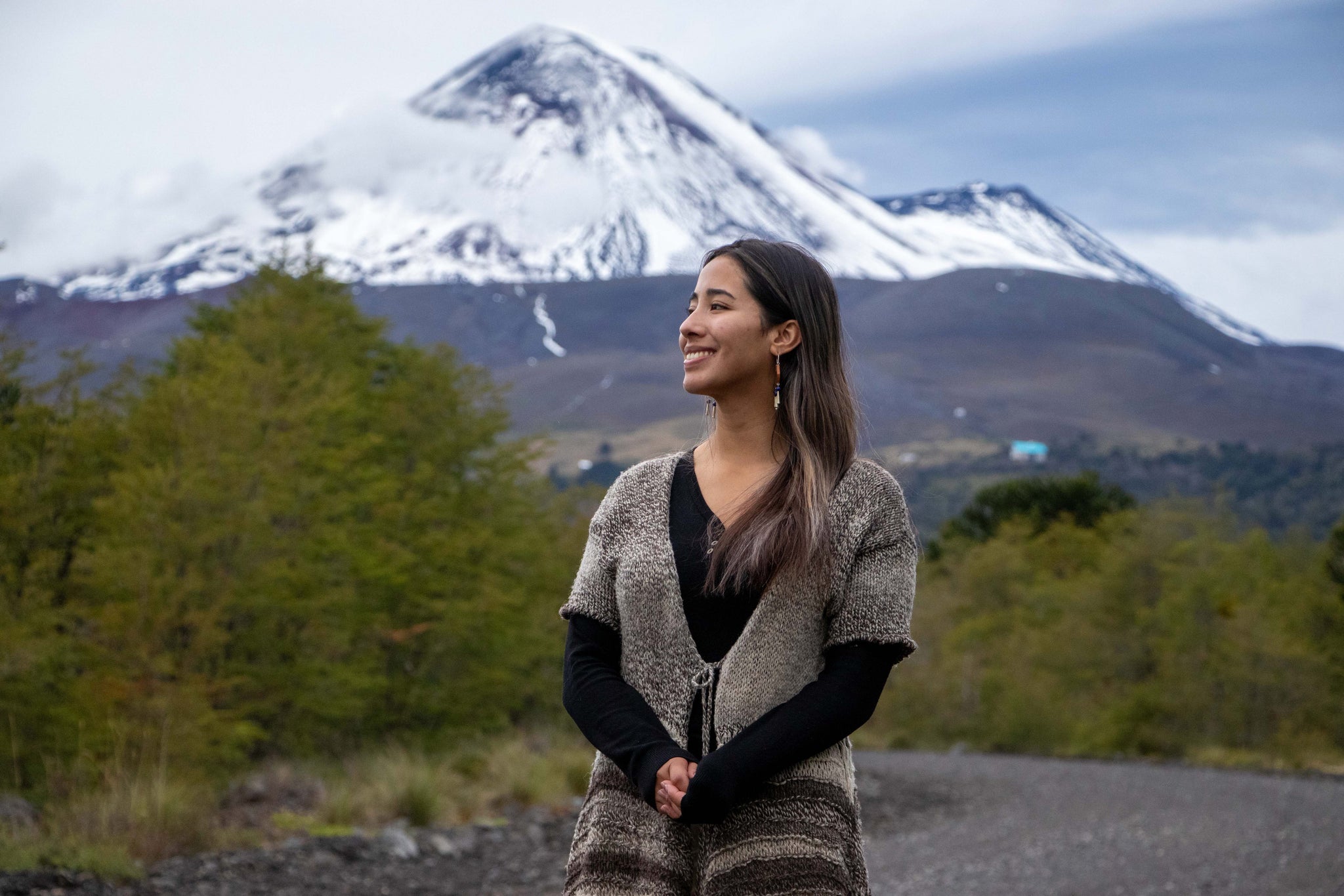
09/2020 Escape
"Hiking is something I've enjoyed from a young age,” says Alex Roddie. “As a child, our family went on summer holidays in the Yorkshire Dales and some of my earliest memories are of my Dad introducing me to some of the hillwalking routes he'd discovered himself as a teenager growing up in the area," explains the writer and photographer. The British adventurer acquired a fountain of knowledge passed down through the generations, then proceeded to develop it further while becoming a fervent voice in contemporary hiking and trekking. Now the co-editor of Wanderlust Europe, he talks us through creating a book about the continent's most majestic trails.
"There's a tremendous sense of freedom in the Yorkshire Dales," he recalls. As a family they visited hidden gorges like Troller's Gill and were told fantasy fictional stories about the dark caves that let his imagination run wild. Rock climbing evolved to ice climbing and later Alpine mountaineering. Roddie took a bar job just to be close to Glen Coe in Scotland. Six years ago he leaped into professional outdoor writing and documenting, which took him and his camera all across Europe. Today, he is a prominent voice in his field, and is guiding adventurers further into new enclaves and more bold locations.

Alex Roddie spent his childhood exploring trails across the United Kingdom, on many occasions his family would visit hiking routes in Scotland, England, and Wales. (Photo: Alex Roddie)
Can you tell us how this book was born and the journey you went on to make it?
At first it was easy. I dipped into my photo catalog and skimmed through my mountain journal, looking for the best routes I'd enjoyed over the years. But the challenging part was moving beyond my personal favorites and looking for ones that would inspire from around Europe. In many cases, these were not well-known ultra-classics. By the time we'd narrowed the list down to the final sequence of hikes that would appear in the book, I was feeling good about the selection. In many ways, the actual writing process was the easy part. Each chapter follows a defined structure. I wrote most of the book during the lockdown here in the United Kingdom, and I found that writing about traveling in such amazing places helped me to cope with the bad news on TV and the uncertainty about the future.
What two lesser-known hiking trails might adventurers want to discover?
In Wanderlust Europe, two routes I enjoyed researching was the new Baltic Coastal Hiking Route around the coastlines of Latvia and Estonia (a trail only opened in late 2019), and the high-level traverse of the Făgăraş Mountains, Romania (which is truly fantastic, but relatively little information is available). I'm also a great believer in exploring for yourself and wandering away from the beaten path. Some of my very best trips have involved just that—putting the guidebooks aside, studying maps, and inventing something for myself. That's the beauty of hiking—the possibilities are limitless.

The trail, known as Baltic Coastal Hiking Route, begins at the Lithuanian-Latvian border, in the village of Nida, and ends in Tallinn, the capital of Estonia. By the time you’re done with this 60-day hike, you’ll have walked every step of both Latvia and Estonia’s coastlines. (Photo: Rolands Ratfelders, Wanderlust Europe)
How does the preparation vary from winter to summer treks?
It very much depends on the walk. There's a huge difference between a winter walk at home in the Lincolnshire Wolds and a winter ascent in Scotland. Much of my hillwalking and backpacking takes place in Scotland, where summer can be a tenuous concept and may only last for a couple of months in any meaningful sense. Snow can be encountered at any time from September to May (or even June in the highest areas). This means that I've learned to be extremely flexible when it comes to planning, attitude, skills, and equipment.
When mountaineering in full winter conditions, I usually carry ice axes, crampons, extra warm clothing and food, emergency equipment such as a survival bag, and possibly snowshoes depending on the snow. At lower levels, I rarely need the snow gear, but I'll always carry additional warm layers and make doubly sure that my pack (and everything in it) is fully waterproof. Winters here in the UK tend to be soggy!
The impact of lower temperatures, shorter daylight hours, and potentially more difficult conditions underfoot all add up to make winter hiking far more of a challenge than the same route in summer. However, I love winter. The colors and the light are sublime. It's a feast for the senses compared to summer, which I often find flat and lifeless. There's also the added benefit that, in Scotland and many other northern countries, you won't be bothered by biting insects during the winter months.

The Făgăraş Traverse is Romania’s most dramatic landscape, as well as the longest continuous mountain ridge in the Carpathian Mountains. It’s possible to walk the entire length of this range in a week, crossing rocky crests and narrow trails close to the ridgeline. (Photo: Janneke Klop, Wanderlust Europe)
Hiking and trekking have never looked more appealing following a year of lockdowns and restricted movement. Why do you think more people are getting drawn to it?
The pandemic has illuminated many truths that were obscured before (or perhaps just convenient to ignore), and one of those truths is that you do not need much to live a happy and meaningful life. Outdoor recreation is simple, has low barriers to entry, and can be enjoyed by almost anyone. Although more difficult mountaineering routes require specialist skills and expensive equipment, all you need to go for a walk-in the woods are suitable footwear, a modest degree of fitness, a map, and maybe a waterproof jacket. At a time when team sports (and other forms of recreation such as shopping and going to the pub) are often restricted in many countries, spending a bit of time outside in the open air is something that we can all do.
It's been fantastic to see the increase in people enjoying the British countryside and rediscovering their connection with nature over the last few months. During the national lockdown, I often saw more people out hiking on a single afternoon in my local area than I usually see in an entire month. Partly as a consequence of the increased interest, gates and stiles have been repaired locally, path maintenance improved, and our local county council is even planning the region's very first outdoors festival.
I hope that this level of participation continues. However, we've also seen a rise in antisocial behavior such as littering, 'dirty' camping (as opposed to quiet, low-impact, leave-no-trace genuine wild camping), and noise. More education is needed to help guide an entire demographic who may have spent limited time out enjoying nature before. As outdoor enthusiasts, we must become excellent role models and showcase the best way to behave in the great outdoors.

The hike includes ascents of Romania’s two highest peaks, Moldoveanu and Negoiu. Above roughly 1,800 m (5,906 ft) the trees begin to thin out, and the trail passes into sparser habitats of dwarf pine, juniper, and purple-flowering Carpathian rhododendron. (Photo: Janneke Klop, Wanderlust Europe)
From all of the Wanderlust Europe hikes, which one do you find the most mesmerizing?
It's so difficult to choose just one. I was glad to be able to include several routes that I find personally meaningful—routes that have been formative in my life as a hiker and backpacker. For me, I'd have to choose the Lochaber Traverse in Scotland. This is a tough challenge even in summer (technical mountaineering in winter conditions), and not one for beginners. It is perfect in every way, offering the best imaginable route to Britain's highest peak, Ben Nevis, over a spellbinding rollercoaster of peaks. Most people will take at least two days to complete it, and a wild camp up on the ridge only adds to the experience. The views are quite simply beyond compare. In March 2016, I enjoyed a winter camp up on the Lochaber Traverse and watched the northern lights shining on pristine snowfields. It was a moment of magic I'll never forget!

Dawn cloud inversion from the Grey Corries, Scotland. "The Lochaber Traverse is the kind of route you dream about," says Roddie in the book, "Few are familiar with the long traverse of exceptional quality to its east, crossing seven Munro-classified mountains and some of the finest ridges in the land." (Photo: Alex Roddie, Wanderlust Europe)
How diverse is Europe for hiking and how is that shown through the book?
Europe is tremendously diverse and offers a huge variety of landscapes for hiking. Many countries have established networks of footpaths, allowing walkers to walk freely through the countryside. There's a huge network of long-distance trails, both signposted and not. Landscapes vary from fenland to vast forests, coast to moorland to mountain.
Europe offers everything to all levels of a hiker, from absolute beginners to the most experienced veterans of long-distance trails. While there is comparatively little genuine wilderness (mostly concentrated in Scandinavia), nature-rich wildland is plentiful in some areas, and these are often popular enough that there's a useful level of hiking infrastructure such as huts, villages or towns for resupply, and signposted trails. We selected several highly challenging routes that traverse such areas—routes including the Nordkalottleden in Norway, Sweden, and Finland; the Cape Wrath Trail in Scotland; Hornstrandir in Iceland; and the Slovene Mountain Trail in Slovenia.
Wildland in Europe is limited, precious, and under unprecedented threat from industrial exploitation. While hiking can place strain on fragile ecosystems, I also believe that the more people love a place the harder they'll fight to protect it. Hiking and backpacking can be an essential part of helping to protect the environment.
Learn more about the great hikes of the continent through Wanderlust Europe, available in German and English.















